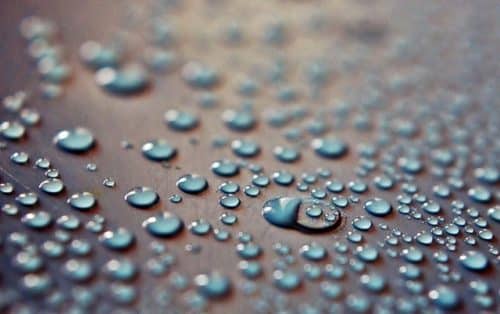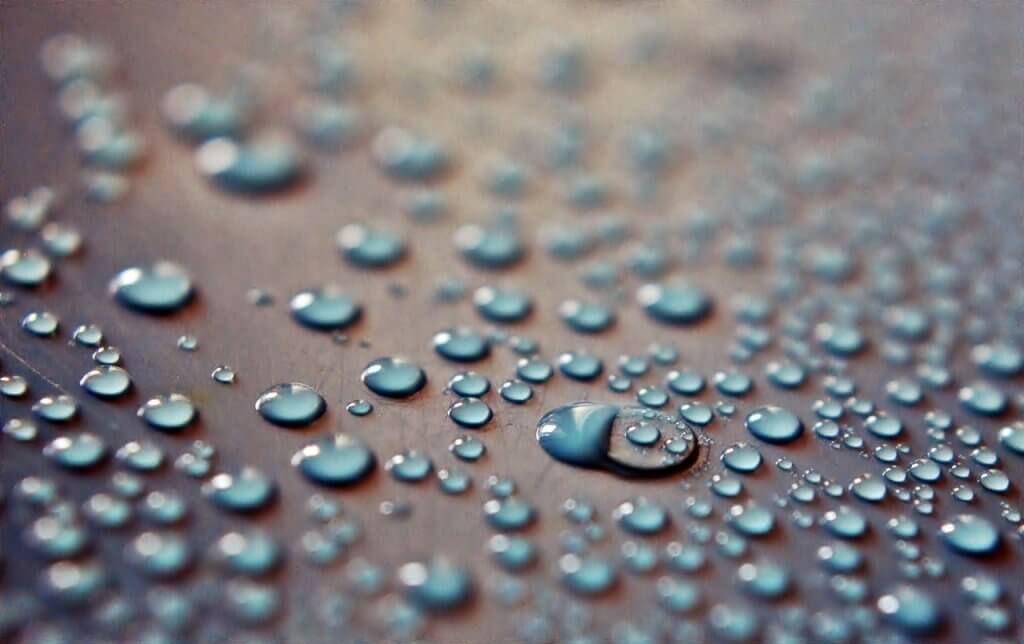Technion researchers have developed a new patent that will effectively separate moisture from the air and turn it into drinking water. Will this be the solution to the world's water crisis?

By Maya Falah, Angle, Science and Environment News Agency
Cape Town in South Africa has a very serious urban water crisis and the World Health Organization (WHO) Estimates that in 2025, about half of the world's population will live in areas where there is a shortage of clean drinking water. This situation could lead to political instability and transboundary water wars.
But it could be that the solution to the local and global water crisis is, literally, right under our noses: Researchers from the Technion developed a model For a system whose purpose is to separate the natural moisture that is regularly found in the air around us, and convert it into drinking water. This patent, and how it can help solve the water crisis the world is heading towards, was presented by Prof. David Brodai from the Faculty of Civil and Environmental Engineering at the Technion on a study day On the subject of water, energy, treatment and recycling.
Available and free to everyone
Brodai, who developed the idea together with his colleague Prof. Eran Friedler, explains that the idea is to utilize a resource that is abundant around us all the time. "Everywhere there is an atmosphere, and everywhere there is moisture," he says. "There is no atmosphere that is completely dry, even the air of the arid Sahara desert has moisture. In fact, the amount of moisture in the atmosphere is equal to the amount of fresh water in the entire world (excluding glaciers). This is a huge amount of water that is available and free to everyone and there are no restrictions on it. Therefore, we believe that this is a solution that has tremendous potential.'
The idea of harvesting moisture from the air is not new. Several companies in the world, incl WaterGen the Israeli, have already developed technologies that do this successfully and are already operating in different parts of the world. The technology that exists today, according to Broday, is similar to that of a home air conditioner: if a home air conditioner cools air that comes from outside, uses the cold air and discards the water that condensed during the cooling process (the water that drips on us from dozens of air conditioners when we walk down the street in the summer), then in the case of moisture harvesting technology , discard the air and use water instead. "What the existing technology does is actually take air and run a cooling process on it to extract the moisture from it," Brodai explains. "You bring it to a state where the moisture condenses on a cold surface and drips from it, then collect it and use it as drinking water."
However, there is a problem with this technology. "The problem is that the air consists not only of moisture but also of other gases such as oxygen and nitrogen, and with this technology we invest in cooling them along with the moisture," Brodai explains. "The volume of air contains at best only 5-4 percent moisture, which means that it is a very small part of it. This means that you invest a lot of energy in cooling something that more than 90 percent of it is not used at all. This is an inefficient use of energy. This process is expensive to begin with, and in fact most of the energy goes to cooling a material that we are not interested in at all.'

The new patent proposed by the researchers proposes to optimize this process by separating the moisture from the air before cooling it. This way it will be possible to invest energy in cooling the moisture itself only and turning it into available water.
Today, attempts are being made worldwide to develop membranes that will do this and separate the moisture from the air, similar to, for example, the desalination process in which membranes separate the salt from the seawater. But to date they have not been able to develop such membranes. And this is where the Israeli researchers come into the picture.
"The alternative we offer is actually based on the use of an adsorbent, called a desiccant. It is a highly concentrated salt solution, which absorbs the moisture naturally from the air when it comes into contact with it," explains Brodai. "The idea is to build a system that will use this material to absorb a large amount of moisture from the air, and cool it only after it has been separated from it."
"The system we offer is made up of several stages," he explains. "In the first step, it will swirl air inside it in order to transfer the moisture from the air to the adsorbent, which is in a liquid state. This cycle repeats itself again and again, and with each such cycle the appendix stores more and more moisture from the air. In the second step, we transfer a small part of the adsorbent liquid to another part of the system, where we create conditions of heat and low pressure, which cause the desiccant to release the moisture stored in it, and we want to condense this moisture, to turn it into water. For that we need to cool it - and this is the third stage, which is actually similar to what happens in the systems that already exist today, but unlike them - at this stage we cool 100 percent moisture, and not air, only a tiny part of which is relevant to our needs.'
Water in the heart of the desert
According to the researchers, the system they propose is not only more efficient in terms of energy consumption, but also provides cleaner water. After cooling, the water collected in the system should be suitable for drinking as it is. This is compared to the technologies that exist today, where the entire air is cooled. "If the air that circulates in the system - in addition to moisture - contains all kinds of disease-causing bacteria, when it cools and the water condenses, the substances in the air may also find their way into the water," Brodai explains. "This means that this water may not be suitable for drinking, and that it needs to be treated to purify it before it can be drunk.
"In our system, on the other hand, the air does not meet the heatsink at all - but only the moisture that has been separated from it. So even if there are all kinds of substances in it that we don't want to reach the water, they are attached to the adsorbing material and are not released in the next step,' he says. "Even if bacteria, dust, etc. have accumulated, since it is a very, very concentrated salt solution (more than the Dead Sea), nothing living can survive this encounter. It just dries up. That is, the moisture that is received should be clean, and the water that is received is pure. Of course they will have to be tested, but the demand for water treatment processes will probably be much smaller, which is expected to lower the price of using them.'
And yet, this is not a cheap process. The researchers emphasize that this is a method of producing water that is more expensive than desalination. "Wherever water can be desalinated - that is, when there is proximity to a water source such as the sea or brackish lakes - desalination is the preferred option," Brodai explains. "But economically, it pays off to build a water transportation system in places that are only about a hundred kilometers from the water source. Beyond that, the cost of transportation becomes more expensive than the cost of desalination. There are also settlements near rivers where the water is good for use. But when you take all these out of the calculation, we are still left with quite a few places in the world where desalination and direct use are uneconomical.'
According to the tests conducted by the researchers - and here is the real advantage of the system - it will be possible to use it almost anywhere in the world. To test this, the researchers performed simulations using a model, with the aim of simulating how the system would function in different climate and humidity conditions. "We wanted to check whether the system can also be used in areas where the air is arid," says Brodai. "For example in the Sahara desert, as well as in Yemen - which is currently inA serious crisis of hunger and lack of drinking water. Indeed, the model showed that the system works effectively even in the desert, in places where the humidity in the air is relatively low. Even in Yemen, for example, we saw that there are places that are not close to natural drinking sources, where this method can work very effectively, and give them a solution that is perhaps better than the existing solutions. This is a system that is both relatively small, and also allows for distributed water production - one that does not depend on one water source, from which the water needs to be piped to all the other places in the settlement. This is a huge advantage.'
The system has not yet been built, and is currently only a model. The researchers are currently in the phase of trying to raise funds for the construction of a prototype, and they are looking for investors who would be interested in investing in the system - which they believe has huge potential to deal with the water shortage, which is only expected to get worse later in the century. "We strongly believe in the idea and the results of the model," Brodai concludes, "but we still need to prove it in practice. This is the next step.'

4 תגובות
A question, maybe retarded, but suppose the whole world uses such a technique, wouldn't it lead to an imbalance in the atmosphere?
You have no idea how racist the black government in South Africa is no less than the Nazis. Forgiveness and caution are over, this is the age of truth
Because of people like you, there is still racism in the "black rule" world... You alone create the differentiation.
You have no idea what is happening in South Africa, the black government is planning to nationalize all white property including the lands and farms without compensation and if there is resistance they are planning a massacre just like the Nazis and the Jews and they don't even deny it. In Cape Town they fired all the white engineers and are trying to drive the white population away